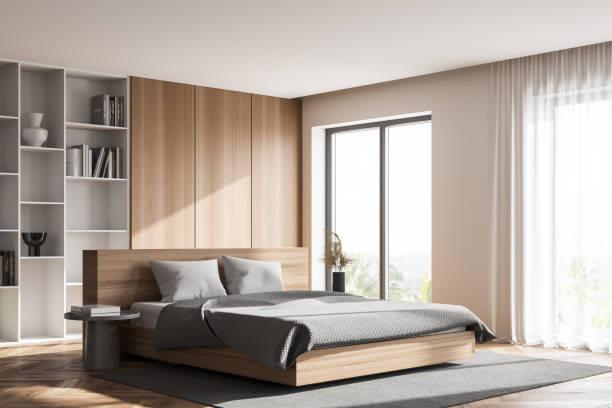Properties of different bed types in comparison. Because beds are the central element in the bedroom, you should take a close look. There are different types of beds, all of which have different properties.
With a bed comparison, you can find out which bed is suitable for which type. A bed test provides interesting results for both single and double beds.
Different bed types in the test

There are a number of criteria that can be used to compare beds. However, the market offers such an immense selection that only the most important ones can be used for consideration. Designer beds, box spring beds, canopy beds, futon beds, themed beds for children, loft beds, bunk beds, and many other representatives of this type can be found in furniture stores and online retailers.
The main distinguishing features of the beds are:
- Number of people for whom it is made
- Height of bed/distance from the floor
- material of the frame
- design
Double bed vs. single bed
Double beds are wider than single beds and are usually made for two people. They offer comfortable space and can also be used by one person. Single beds, on the other hand, are only intended for one person and are usually 90 cm wide. They are space-saving and fit perfectly in children’s rooms, shared rooms, and smaller bedrooms in general. The challenge with the larger double beds is finding the right mattress. Because you can either opt for a large mattress or buy two single ones that you push together. But then you usually need a topper or other gap filler so that there is no hollow in the middle.
Box spring bed vs. futon bed
If you would like to have a bed with a large distance to the floor, box spring beds are the right choice. Due to the components and the resulting high edge of the bed, the distance to the floor is extremely large, which makes it easy to get in and out. A box spring bed can also be helpful for anyone who has problems with joints or the like. Of course, it’s also a question of design and it’s just nice to have American hotel room comfort in your own four walls.
Those who prefer to sleep flat and close to the floor should put on Japanese futon beds. This type of bed is built very deep and close to the floor so that nobody has to worry about falling out of bed after tossing and turning at night. This too has its advantages. In addition, futon beds also look elegant and stylish in their own way.
Beds comparison of the material
Not unimportant is the material from which the bed frame is made. Among other things, it determines the look, quality, and longevity. There are various raw materials for the production of beds. The best-known types of beds are metal beds, solid wood beds, and upholstered beds. The latter often use imitation leather, real leather, and fabric covers, which ensure pleasant padding of the surface.
Solid wood beds, on the other hand, are made without upholstery and are made of real wood. The use of spruce, beech, or oak wood is popular. A wooden bed adds rustic charm to the bedroom and goes well with most furniture. Metal beds are often provided with an ornate frame, but there are also relatively simple designs. They look less bulky than wooden beds and in most cases look modern and elegant.
Different designs in the bed test

When comparing designs, it is about the color and shape of the bed types, because beds differ in appearance at first glance. The fact that this can be very different is due to the abundance of the offer. Four-poster beds, for example, are rarely bought, but they are a real eye-catcher in the bedroom and promise heavenly nights.
More and more people appreciate the comfortable design of a box spring bed, while others sleep best in classic solid wood beds. Bunk beds and themed beds are very popular with children. There are beds in the form of cars, castles, and similar child-friendly themes to buy. But design is also a question of money.
